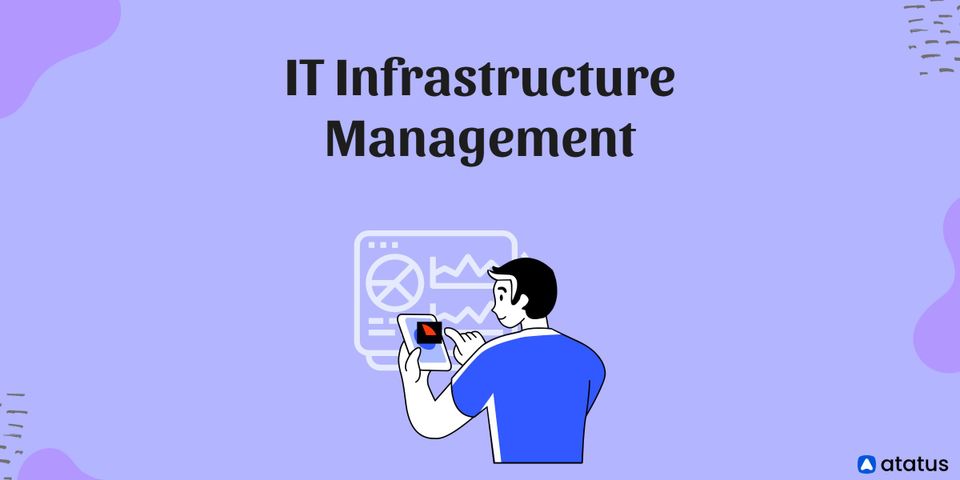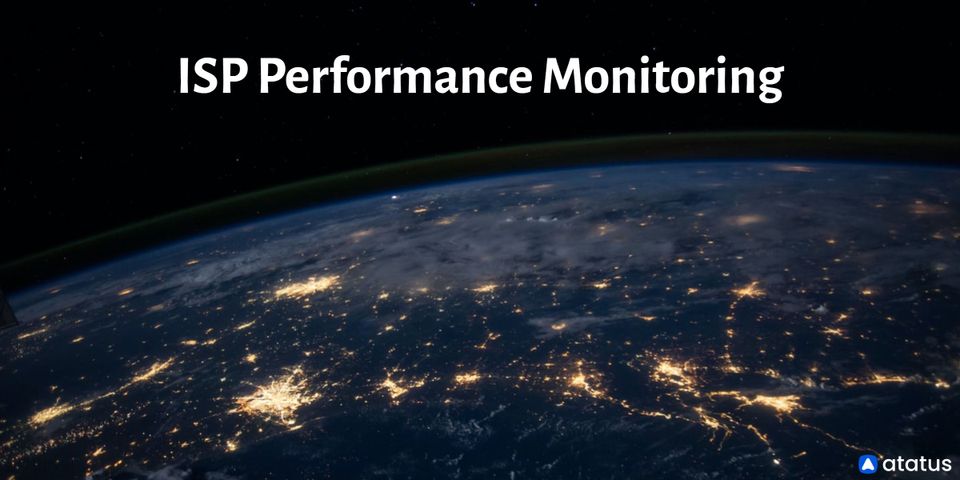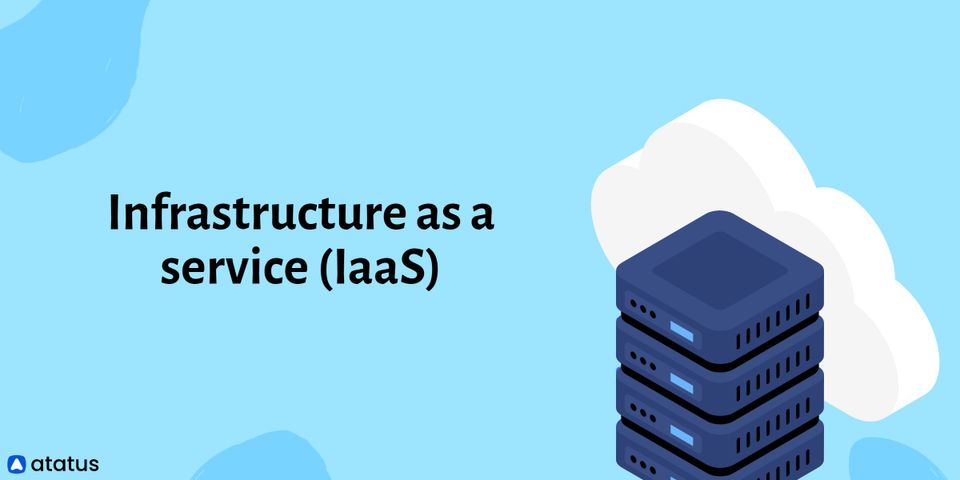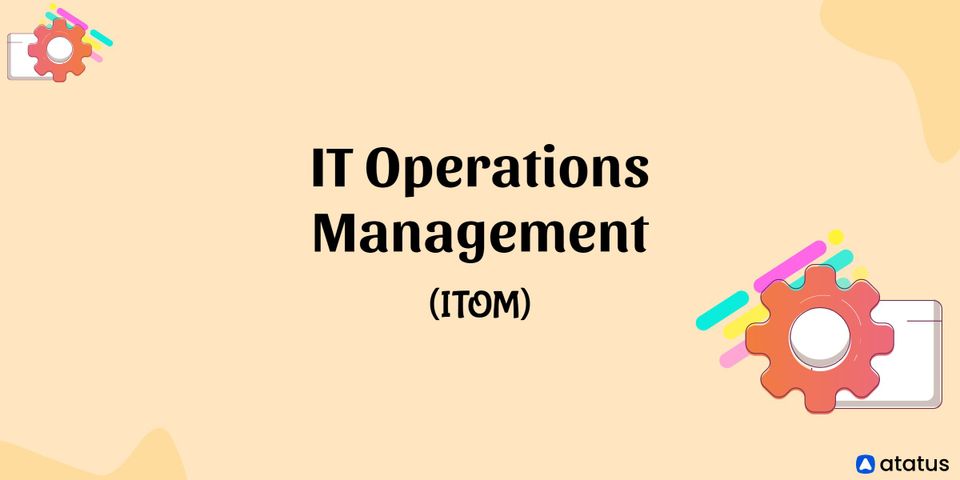Any issues or downtime in an organization's IT infrastructure can result in a significant loss of productivity, which can harm profits. Inefficient IT infrastructure management can cause multinational businesses to lose valuable time and money. Security breaches are becoming more common as global networks and surroundings become more sophisticated.
We will go over the following:
- What is IT Infrastructure?
- What is IT Infrastructure Management?
- Benefits of IT Infrastructure Management
- Challenges in IT Infrastructure Management
- IT Infrastructure Management Best Practices
What is IT Infrastructure?
Today's CIOs are responsible for effectively managing the IT infrastructure that supports the enterprise's or corporation's overall goals. Increasing corporate value through speeding information retrieval and reporting, delivering proactive and agile responses to harness information and technology, and rapidly adjusting to allow enhanced end-user experiences are all part of this duty. IT leadership relies on the variety of real and intangible aspects that make up an organization's technology backbone, the IT infrastructure, to complete this massive task.
All elements that assist the management and usability of data and information make up the IT infrastructure. Data storage, facilities, hardware, network systems, retrieval, legacy interfaces, and software are all employed to support a company's aims. Hiring, training, policy, testing, process, updates, and repairs are all part of the structure.
What is IT Infrastructure Management?
The structures required to run a physical facility or a business are referred to as infrastructure. Infrastructure management has developed to encompass the fundamental backbone of the company, technology, as previously stated. IT infrastructure management is the term used to describe this process.
IT infrastructure management's goal is to structure and govern the functions in charge of a wide range of technical processes, which often involve hardware, software, and networking in both real and virtual environments.
The key goal is to keep corporate productivity high while minimizing downtime. It can take many forms, from monitoring for infections to inspecting equipment for signals of impending upgrades.
In addition, the following key IT components and services are frequently managed by a corporate IT infrastructure management team. The IT infrastructure management team's services are usually hidden behind the scenes. They look after the technology that helps with day-to-day operations, such as the Internet, email, and data access. To be productive, the team relies significantly on real-time or near-real-time management and monitoring systems.
The following are a few of the most popular types of technology infrastructure management:
- API Management
The application programming interfaces (APIs) that connect applications and data across organizations and clouds are distributed, controlled, and analysed. - Cloud Management
Manages resource deployments, use, integration, and disaster recovery to give cloud admins control over everything running in the cloud—end users, data, applications, and services. - Configuration Management
Maintains the desired, consistent condition of computer systems, servers, and software. - Container Orchestration
Container deployment, management, scalability, and networking are all automated. - IT Automation
To replace or eliminate human involvement with IT systems creates repeatable instructions and processes. Infrastructure automation is another term for it. - IT Operations Management
This is the discipline of modelling, evaluating, and optimizing business processes that are frequently repeated, continuing, or predictable. Business process management is another name for it. - OS Management
Content, patch, provisioning, and subscription management for environments with the same operating system are all available. - Risk Management
Identifies and analyses risks then develop plans to reduce or eliminate those risks and their potential consequences. - Virtualization Management
Simplifies resource administration, improves data analysis and streamlines operations by integrating with virtual environments and the underlying physical hardware.
Benefits of IT Infrastructure Management
There are numerous benefits of IT Infrastructure Management such as:
- Better Customer Service
The infrastructure on which IT and business services are constructed determines their quality. Improve user and customer happiness by improving IT infrastructure performance, providing faster provisioning, executing service-related changes reliably and quickly, and reducing downtime through accelerated maintenance operations. - Cost and Time Savings
A completely integrated, comprehensive solution that eliminates the need for piecemeal solutions. Data synchronization is no longer necessary because it is time-consuming and error-prone. It improves the quality of documentation, helps process optimization, and provides a more solid foundation for IT automation at a lower total cost of operation, with fewer people and in less time. - Keep Productivity Flowing
If you've made the correct IT infrastructure management decisions, you can recover data that's been lost, destroyed, corrupted, or otherwise compromised. When disaster strikes, you'll be able to retrieve and restore company data due to backups built into your IT infrastructure, ensuring that end users have access to the information they need to keep functioning. - Leverage Transparency
Deep insight into the multiple layers of the infrastructure and relationships between pieces is provided by a single system of record for all IT components, which is recorded in a unified data model. To speed up fault resolution, root-cause relationships become obvious. - Limit Disasters
Even if you take all of the necessary safeguards, disasters can happen, but by taking IT infrastructure management seriously, you can lessen the likelihood of them happening and the harm they cause. Set up mechanisms to help you monitor and detect risks before they cause harm. - Make Better IT Decisions
Unless a calamity forces you to, chances are you don't know how your IT environment is acting or functioning if you aren't already controlling and monitoring it. You'll be able to recognize when to update and upgrade systems, as well as when to limit risk, by managing your IT infrastructure.
Challenges in IT Infrastructure Management
We've compiled a list of some of the most pressing infrastructure management issues that your company may encounter in the future:
- Compute Management and Provisioning
The massive amounts of data available nowadays are one of the major difficulties for IT administrators. To avoid adding additional employees to these procedures, high-performance computing of these enormous data volumes will require virtualization and automation. The main challenge for IT administrators is to make these jobs simpler and faster to complete. - Data Acquisition Problems
In TCP/IP networks, firewalls that safeguard emails, applications, and web browsing can cause significant packet losses. This can result in significant data loss and a significant reduction in network speeds, making online cooperation unfeasible. Switches and routers that do not have the appropriate high-speed memory might cause similar losses. - Dearth of Ways to Improve Data Analytics
There aren't many strategies in place right now that IT managers may utilize to select quality data from massive data collections. It's critical to spot patterns in data, evaluate them properly, and apply them to make business decisions in infrastructure management. - Improper Networks and Connectivity
It is critical for any organization to have a solid and stable network in place for it to run successfully. IT infrastructure management can be tough for any organization's IT manager without a reliable network connection. For data optimization, new software-based technologies and network architectural design are necessary. - Lack of Efficient Data Storage Architectures
Cloud storage has mostly replaced local storage in today's world. Though it is a cost-effective and scalable data storage option for IT managers, it lacks the necessary data storage architectures to support a wide range of applications. A more adaptable cloud storage solution that goes beyond space and cost is needed by the IT sector. - Lack of Powerful Computing Platforms
The lack of energy and space to power supercomputers has been a key barrier to increasing computer processing capacity. IT managers have always been on the search for better and faster solutions that would aid in the processing of today's massive amounts of data.
IT Infrastructure Management Best Practices
The following are some of the best IT infrastructure management practices:
- Create a Strategy for Managing Your IT Infrastructure
Make a strategy for managing your IT infrastructure. Include different stakeholders in the planning process so you may consider a variety of viewpoints and design a complete strategy to manage all areas of your infrastructure. - Keep a Record of Your Strategy
Create IT infrastructure management practices and protocols, and make sure they're documented properly. These procedures and protocols can be used to establish how all components of your infrastructure should be controlled. In addition, you should examine and update your infrastructure management processes and protocols on a regular basis. - Maintain Consistency
Stakeholders should be informed about your IT infrastructure management approach. Continue to be persistent and look for ways to improve this method. As a result, your organization can keep an eye out for infrastructure issues and address them before they wreak havoc on your IT operations. - Make Your Strategy Consistent
Develop key performance indicators (KPIs) for IT tools, technologies, and systems performance. Review your service level agreements (SLAs) and make sure your company has standards in place to meet the expectations of its stakeholders. Maintain these standards and make sure they allow you to get the most out of your infrastructure.
Conclusion
It's easier to keep all IT infrastructure components up and operating with effective IT infrastructure management. This leads to increased productivity, which leads to higher employee and customer satisfaction. With the stakes so high, finding the correct Application Performance Management tool to help your company's IT team is critical.
Monitor Your Infrastructure with Atatus
Atatus provides complete visibility into your infrastructure, allowing you to analyze and manage business-critical performance issues. Correlating application metrics, logs, and traces can help you make better business decisions and troubleshoot issues faster. You'll be able to see how your servers or cloud instances are being used in real-time.
Monitor all of your hosts' major performance indicators, including CPU, memory, I/O, disks, network, and load averages, as well as trends for all your servers. You will provide actual business value throughout your server landscape by monitoring the health and performance of your services, hosts, containers, and resources that impact your business revenue.
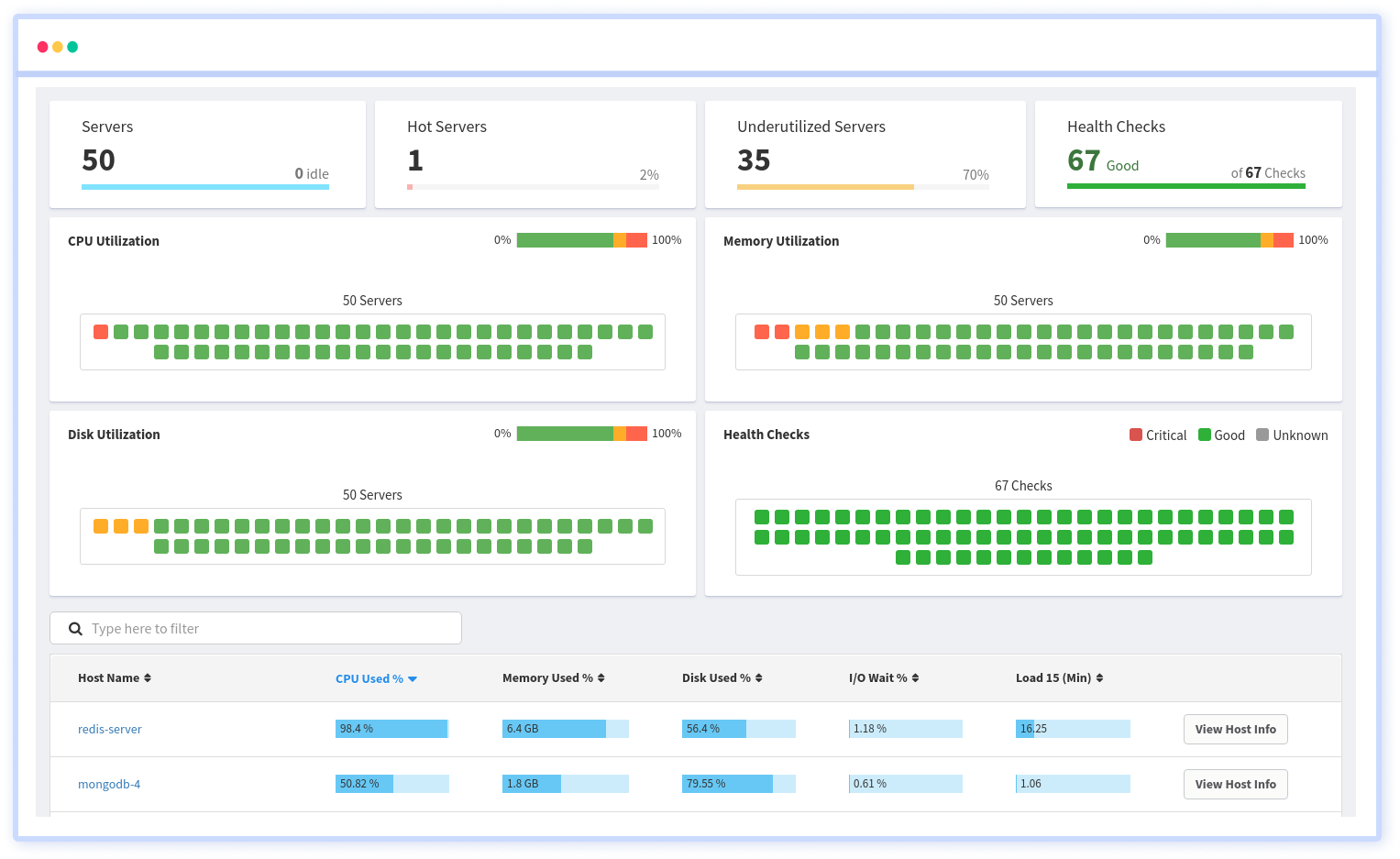
Atatus can be beneficial to your business, which provides a comprehensive view of your application, including how it works, where performance bottlenecks exist, which users are most impacted, and which errors break your code for your frontend, backend, and infrastructure.

